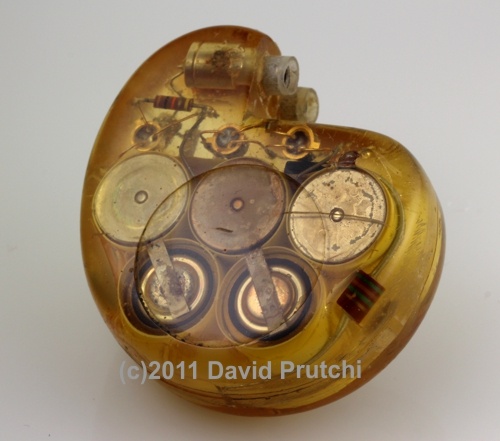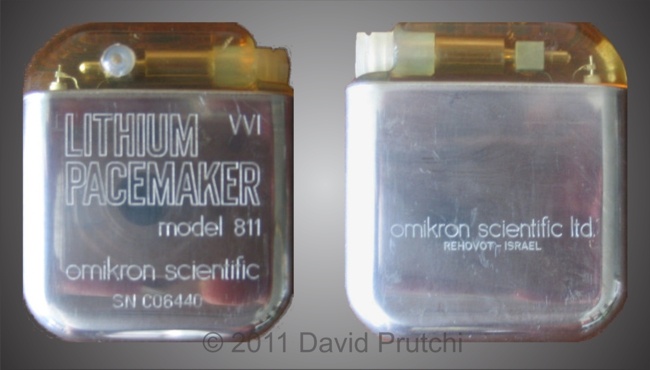Medtronic announced at TEDMED 2010 that it is working on leadless pacemakers. Dr. Stephen Osterle, senior vice president of medicine and technology and member of Medtronic’s Executive Management Team, unveiled the device. Osterle said that physicians will be able to control the device with a smart phone.
EBR System’s Wireless Pacemaker

EBR Systems, Inc., founded in 2003 and headquartered in Sunnyvale, CA, is developing the WiCS® Wireless Cardiac Stimulation technology to eliminate cardiac pacing leads, historically a major source of complications and reliability issues. The startup was spun out of research by founder Debra Echt, a former professor of medicine and a cardiologist at Vanderbilt University. Continue reading
Nanostim’s Leadless Pacemaker
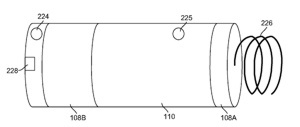 Nanostim is an early-stage AIMD company in Milpitas, CA that is developing a pacemaker that can be implanted inside the heart through a catheter. The tiny device is attached directly to the heart, eliminating the need for leads.
Nanostim is an early-stage AIMD company in Milpitas, CA that is developing a pacemaker that can be implanted inside the heart through a catheter. The tiny device is attached directly to the heart, eliminating the need for leads.
In May 2011 Nanostim announced that St. Jude Medical had made a substantial investment in the company.
The company is operating in stealth mode, but some details about the leadless pacemaker have emerged from Nanostim’s patents and patent applications. An interesting detail is about the possible use of a betavoltaic power source: Continue reading
BetaBatt’s Modern Betavoltaic Cells to Power Active Implantable Devices

- Image Credit: University of Rochester
Nuclear energy cells that converted the impact of the β-particles on a p-n junction were developed in the 1970s. One example was CCC’s atomic pacemaker, which was powered by a promethium-147 McDonell-Douglas Betacel 400.
Lately, BetaBatt Inc. of Houston, TX licensed beta-voltaic technology developed at the University of Rochester to develop an implantable power source under the trade name DEC™ Cell, in which a silicon wafer captures electrons emitted by a radioactive gas such as tritium. The wafer is etched in a three-dimensional surface to capture more electrons. The battery is sealed in a hermetic package which entirely contains the low-energy particles emitted by tritium, rendering the battery safe for long-term human implant from a radiological-health standpoint. Tritium has a half-life of 12.3 years so that the technology is more than adequate to meet the requirements of many implantable devices. Continue reading
Glucose Fuel-Cell-Powered Implantable Devices
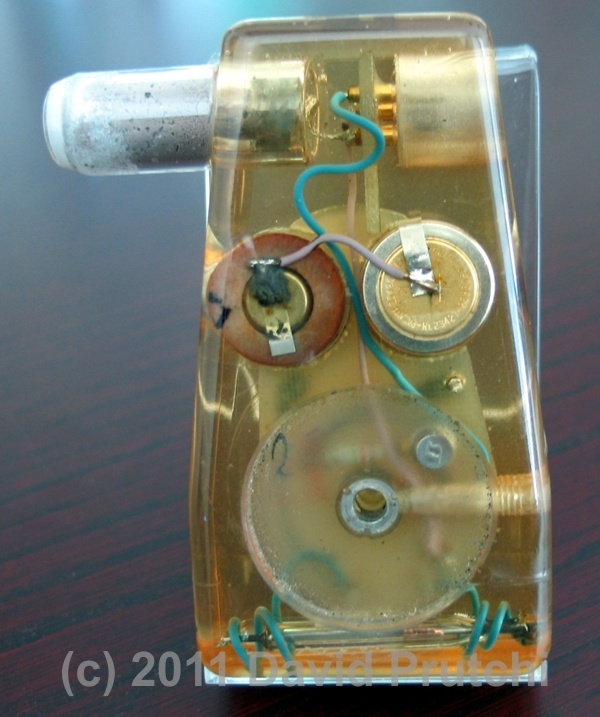
My friend, Dr. Alain Ripart – the Chief Scientific Officer at Ela Medical (now part of Sorin) showed me this interesting contraption from his personal collection. It is an experimental glucose-powered pacemaker developed in the 1970s. It generated electricity by acquiring its fuel (glucose) directly from a living body to generate enough current to charge two NiCd cells that powered the pacemaker. Continue reading
American Optical’s Nuclear Pacemaker (1970’s)
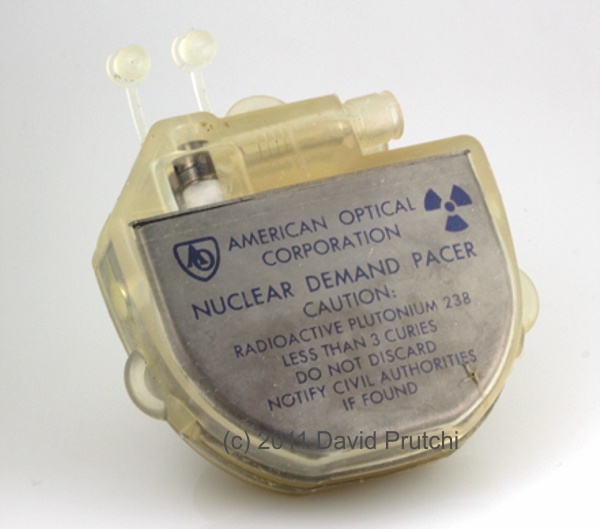
Barouh Berkovits at American Optical Co of Boston, MA designed the first “Demand Pacemaker” – what we now know as a VVI pacemaker. As other companies in the 1970s, American Optical developed a nuclear-battery-powered version of their pacemaker.
American Optical used a 3Ci Pu-238 Radioisotope Thermal Generator (RTG) produced by Fred Hittman’s Hittman Nuclear Development Corp. (Model NB-200). It consisted of a tiny 8 Ci slug of metallic Plutonium 238 (Pu-238). The radiation produced by the Pu-238 bombarded the walls of its container, producing heat that a thermopile then converted to an electrical current. A thermopile is a stack of thermocouples, which are devices that convert thermal energy directly into electrical energy using Seebeck effect. The thermocouple was made of two kinds of metal (or semiconductors) connected to each other in a closed loop. If the two junctions are at different temperatures, an electric current will flow in the loop. Continue reading
Arco Medical’s Nuclear-Powered Pacemaker (ca.1974)
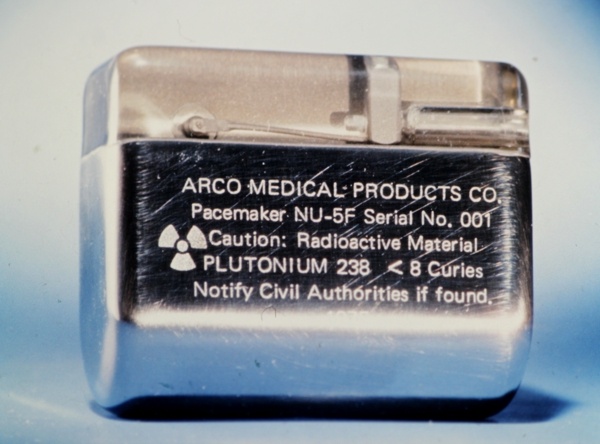
Image Credit: Arco Medical Products Co. (1974)
An isotopic thermoelectric generator was developed in the US by Numec Corporation under a contract from the US Atomic Energy Commission and sold for $3,200 (back in 1974). The thermopile consisted of doped bismuth telluride pairs that were placed in a parallel/series arrangement to generate some 300 μW of power to run this Arco Medical model NU-5F pacemaker. Continue reading
Medtronic’s Atomic Pacemaker (early 1970’s)
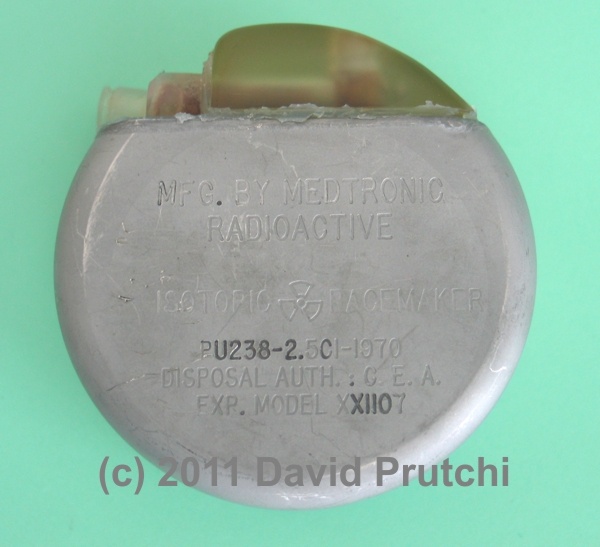
In the late 1960s Medtronic – today the largest manufacturer of implantable medical devices in the world – teamed up with Alcatel, a French company, to design a nuclear-powered pacemaker. The first human implant of the device took place in Paris in 1970.
The nuclear battery in the Medtronic device used a tiny 2.5 Ci slug of metallic Plutonium 238 (Pu-238). The radiation produced by the Pu-238 bombarded the walls of its container, producing heat that a thermopile then converted to an electrical current. A thermopile is a stack of thermocouples, which are devices that convert thermal energy directly into electrical energy using Seebeck effect. A thermocouple is made of two kinds of metal (or semiconductors) connected to each other in a closed loop. If the two junctions are at different temperatures, an electric current will flow in the loop. Continue reading
CCC del Uruguay’s Atomic Pacemaker (1972)
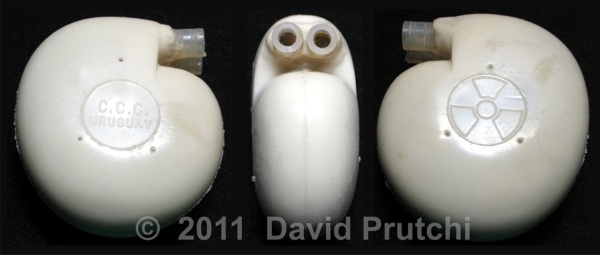
This nuclear pacemaker was manufactured ca. 1972 by Dr. Orestes Fiandra’s CCC del Uruguay. It was powered by a McDonell-Douglas Betacel 400 which had promethium-147 sandwiched between semiconductor wafers. As the radioactive promethium isotope decays, it emits β-particles (electrons). The impact of the β-particles on a p-n junction causes a forward bias in the semiconductor similar to what happens in a photovoltaic cell (a solar cell).
The Betacel 400 had an open-circuit voltage of 4.7V and a short circuit current of 115μA. The maximum power output was 370μW. CCC’s pacemaker was expected to last for 10 years when powered by this nuclear battery. Continue reading
Indian Pacemaker Companies: Shree Pacetronix and MediVed

Shree Pacetronix Ltd., was founded in Pithampur, Dist. Dhar, India in 1988. In 1993 the company was converted to a Public Limited Company. The company is listed on the Bombay Stock Exchange and regional exchanges.
Pacetronix’s website shows EC type certificates for its Pinnacle SSIR (model 297), Pinnacle SSI (model 8820), Charak DDD (model ND 747), and Akash VDD (model ND 244) pacemakers. Continue reading
CCC del Uruguay’s Early Mercury-Cell Pacemaker (1969)
This is one of my most prized possessions. It is one of the very first pacemakers produced by CCC del Uruguay in 1969. It was given to me by my friend, the late Dr. Orestes Fiandra, founder of CCC del Uruguay.
On February 2, 1960, Dr. Orestes Fiandra and Dr. Roberto Rubio accomplished the first succesful long-term human implant of a pacemaker. The pacemaker was manufactured by Dr. Rune Elmqvist of Elema-Schönander in Sweden, and was implanted in Uruguay in a 34-year-old patient with AV block. This unit worked successfully for nine and a half months, until the patient died of sepsis from an unrelated infection.
In 1969, Dr. Fiandra started the “Centro de Construccion de Cardioestimuladores del Uruguay” (CCC for short) with the purpose of producing pacemakers for use in Latin America at prices well under those of American devices. The device in the photograph above is one of these devices – a simple VOO pacemaker powered by 5 mercury cells encapsulated in epoxy resin.
CCC Medical – Top OEM to AIMD Start-Ups
 CCC is one of the oldest pacemaker manufacturers in the world. It was founded in 1969 by Dr. Orestes Fiandra, who performed the first succesful, human, long-term pacemaker implant in the world.
CCC is one of the oldest pacemaker manufacturers in the world. It was founded in 1969 by Dr. Orestes Fiandra, who performed the first succesful, human, long-term pacemaker implant in the world.This was achieved in Uruguay on February 2, 1960 by Dr. Orestes Fiandra and Dr. Roberto Rubio. The pacemaker was manufactured by Dr. Rune Elmqvist of Elema-Schönander in Sweden, and was implanted in Uruguay in a 34-year-old patient with AV block. This unit worked successfully for nine and a half months, until the patient died of sepsis from an unrelated infection. Continue reading
Omikron Scientific – Israeli Pacemaker Company (1979-1985)
Omikron Scientific was a small-scale pacemaker company founded in Rehovot, Israel in 1979. The company stopped pacemaker production in 1985.
Besides pacemakers, Omikron also produced a skin substitute called Omniderm, which was a thin, transparent, flexible membrane. It was used when a biological dressing would otherwise have been used.
Omikron’s pacemakers were all VVI and featured gradual decline Magnet Rate & Programmed Rate. Models included the 811 (6.5 year longevity), 811L (10 year longevity), 811XL (14 year longevity), 821 (VVIM with 8 year longevity), 837, a 838 (6.5 year longevity).
Click here for Omikron’s patents.
MicroTransponder’s Injectable Stimulators
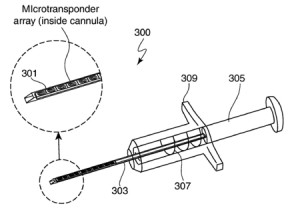
From US Patent Application Publication US 2009/0163889 A1
MicroTransponder was founded in Dallas, TX in 2007 when it licensed technology developed at University of Texas in Dallas (UTD) by Larry Cauller, who heads the cortical connections lab. The first wireless transponder was developed under a DARPA Revolutionizing Prosthetics grant to create a bi-directional neural interface for a prosthetic hand. Continue reading
Northstar Neuroscience’s Renova Cortical Stimulation System (1999-2009)

Northstar was founded in 1999 as Vertis Neuroscience headquartered in Seattle, WA, and the original goal was to develop electrical stimulation for chronic back pain. In 2003, under its new name, Northstar Neuroscience, then developed the Renova cortical stimulation system to deliver targeted electrical stimulation to the brain cortex as a treatment for stroke-related upper extremity. Continue reading


